Gardens are often filled with vibrant hues of red, yellow, pink, and purple—but what if you could introduce an element of mystery, elegance, and drama to your outdoor space? Black-flower plants are a rare and captivating choice that can instantly transform the atmosphere of your garden. While these flowers aren’t truly black (they are deep shades of maroon, purple, or burgundy), their appearance is so striking that they create the illusion of velvety black. They stand out beautifully when paired with lighter blooms and greenery, giving your garden a bold, gothic, or even fairytale-like feel.
If you want to add something truly unique to your garden, here are five stunning black-flower plants you can grow with ease. Each plant not only adds visual depth but also enhances the overall charm of your landscape.
1. Black Tulip (Tulipa ‘Queen of Night’)
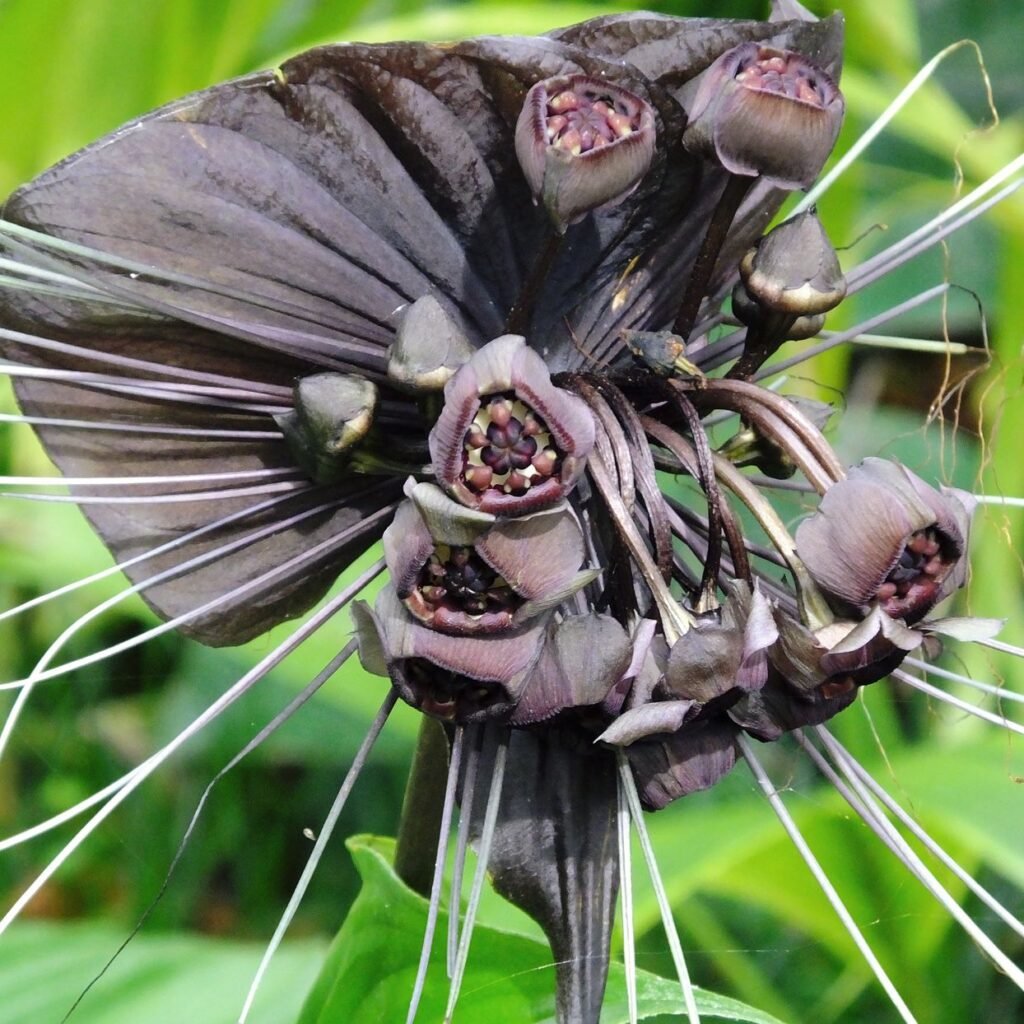
The Queen of Night tulip is perhaps one of the most iconic black flowers in the gardening world. With its deep purple petals that appear almost jet-black in the right lighting, it adds a touch of sophistication to spring gardens.
- Why it’s stunning: The velvety texture and near-black color make it a showstopper when planted in clusters or borders.
- Growing conditions:
- Light: Prefers full sun to partial shade.
- Soil: Well-drained, fertile soil is best.
- Watering: Moderate watering; avoid soggy soil to prevent bulb rot.
- Care tips: Plant tulip bulbs in the fall (before the first frost) about 6–8 inches deep. Combine with white or yellow tulips for a dramatic contrast in spring.
- Special feature: These tulips bloom in late spring, giving your garden an enchanting, moody atmosphere during the season of renewal.
2. Black Calla Lily (Zantedeschia ‘Black Star’)
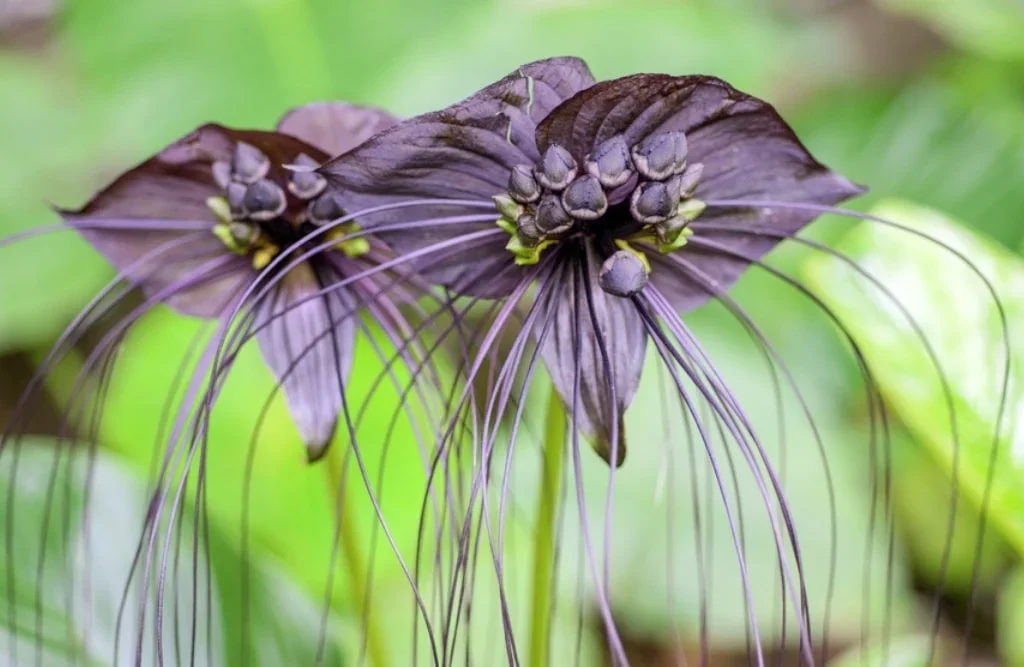
Calla lilies are already known for their elegant trumpet-like blooms, and the Black Star calla lily takes that elegance to another level. Its dark maroon-to-black flowers paired with green leaves create a stunning focal point in garden beds or containers.
- Why it’s stunning: Its exotic appearance and unique bloom shape make it a luxurious addition to modern or traditional gardens.
- Growing conditions:
- Light: Thrives in full sun to partial shade.
- Soil: Moist, well-drained soil enriched with compost.
- Watering: Keep the soil consistently moist, especially during the growing season.
- Care tips: Plant rhizomes in spring once the soil warms up. Deadhead spent blooms to encourage more flowers and prevent energy loss.
- Special feature: Can also be grown indoors in containers, making it versatile for both gardens and homes.
3. Black Hollyhock (Alcea rosea ‘Nigra’)
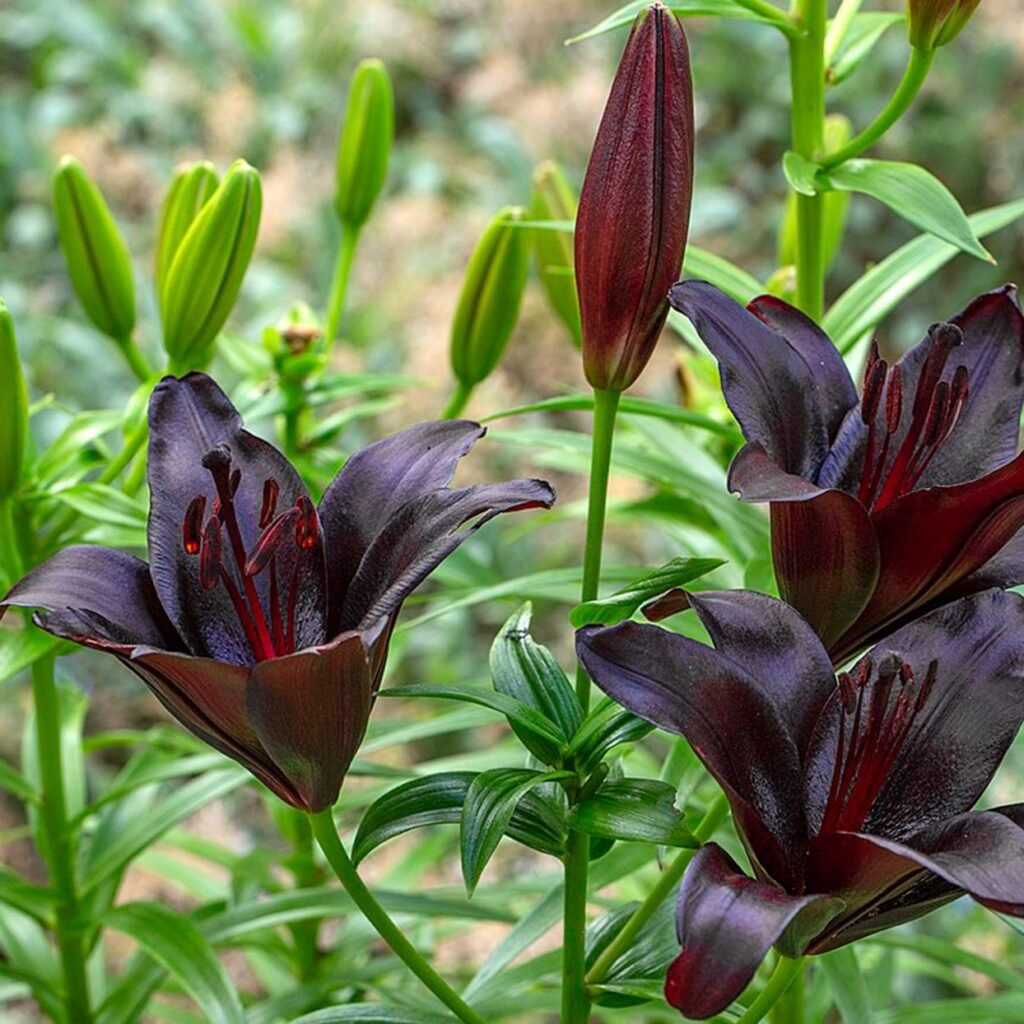
For those who love tall, statement plants, the Black Hollyhock is a must-have. This biennial or short-lived perennial can grow up to 6–8 feet tall, producing dramatic, nearly black blooms along towering stalks.
- Why it’s stunning: The height and rich color of the flowers make it perfect for creating a striking backdrop in cottage gardens.
- Growing conditions:
- Light: Full sun is ideal.
- Soil: Fertile, well-drained soil with plenty of organic matter.
- Watering: Regular watering is needed, especially in dry spells.
- Care tips: Hollyhocks are prone to rust (a common fungal disease), so ensure good air circulation. Plant them near fences or walls for support.
- Special feature: Black hollyhocks attract bees, butterflies, and hummingbirds, making them both mysterious and pollinator-friendly.
4. Black Iris (Iris chrysographes)
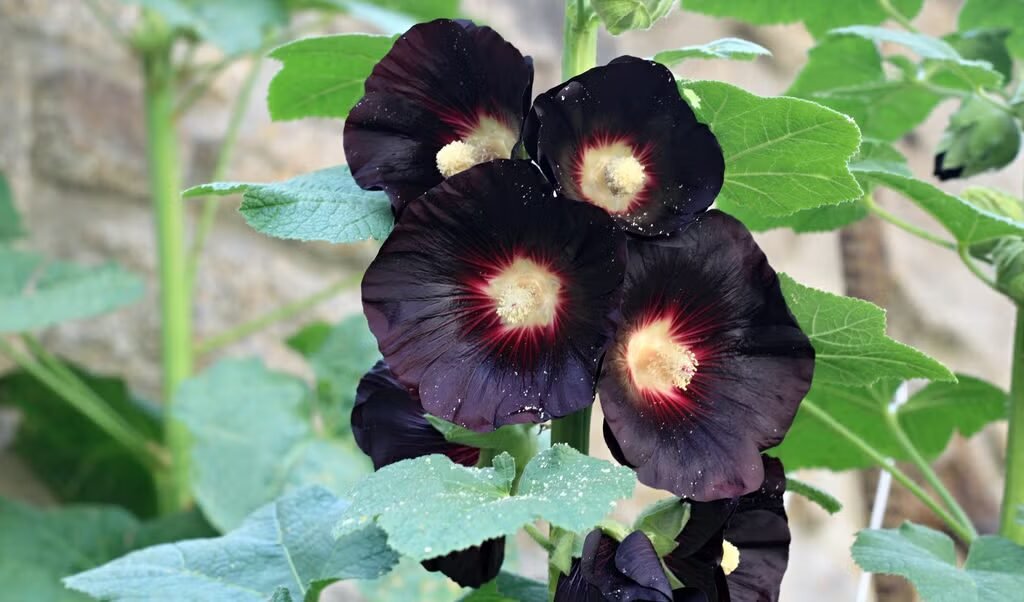
The Black Iris, also called the “Black Siberian Iris,” is an exquisite perennial with sword-like leaves and deep velvety flowers that bloom in late spring to early summer. Its dramatic appearance adds luxury to borders and water garden edges.
- Why it’s stunning: Its dark, velvety petals with subtle purple undertones look regal and pair well with lighter perennials.
- Growing conditions:
- Light: Prefers full sun but tolerates partial shade.
- Soil: Moist, well-drained soil; thrives near water features.
- Watering: Needs consistent watering, especially during the blooming period.
- Care tips: Divide rhizomes every 3–4 years to prevent overcrowding. Add mulch to retain soil moisture.
- Special feature: Symbolizes elegance and mystery, often used in high-end floral arrangements.
5. Bat Flower (Tacca chantrieri)
For gardeners who love the unusual, the Bat Flower is a rare exotic plant that truly stands out. Its large, bat-shaped black blossoms, accompanied by long whisker-like bracts, give it an otherworldly charm.
- Why it’s stunning: Its eerie, bat-like shape makes it one of the most unique black-flower plants in existence.
- Growing conditions:
- Light: Prefers bright, indirect sunlight (ideal for shaded gardens or indoors).
- Soil: Rich, well-drained soil with high humidity.
- Watering: Needs consistently moist soil; never let it dry out completely.
- Care tips: This tropical plant thrives in warm, humid environments, so misting or a humidifier is recommended when grown indoors.
- Special feature: Often considered a collector’s plant due to its exotic rarity and unusual appearance.
Tips for Designing with Black-Flower Plants
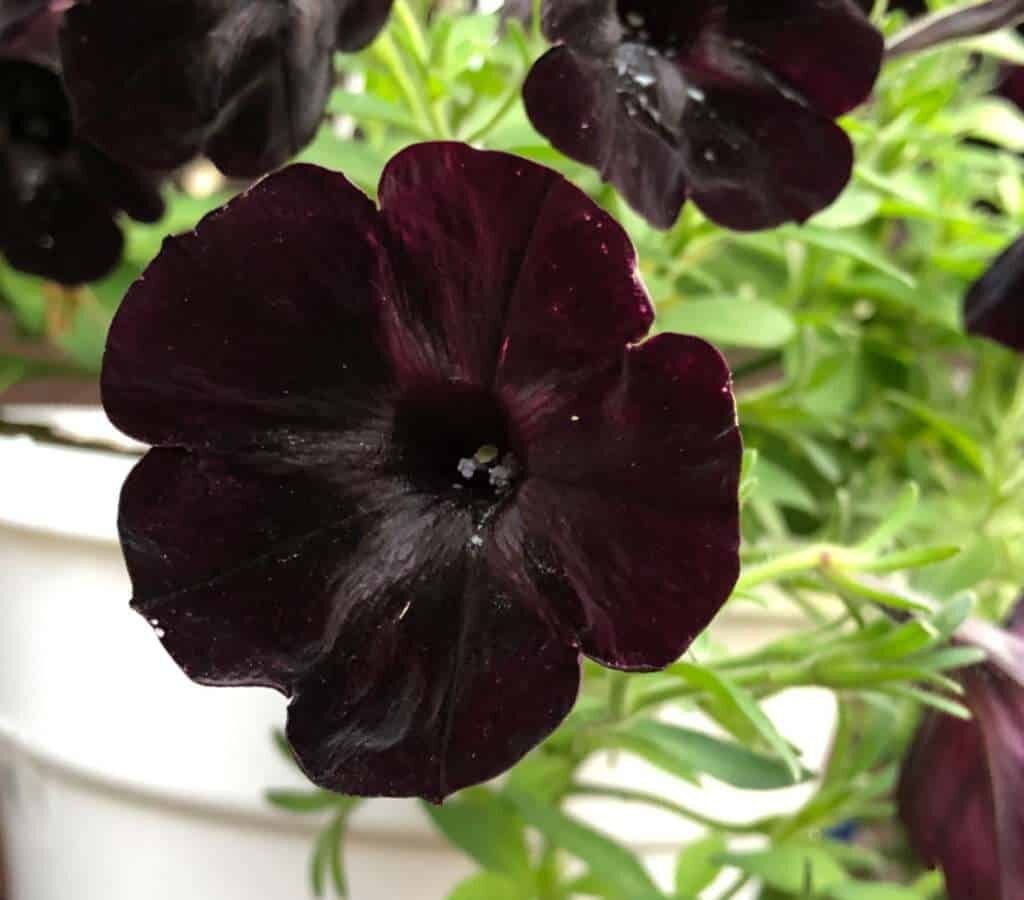
- Contrast is key: Black flowers pop when paired with white, yellow, or pastel-colored blooms.
- Mix textures: Combine velvety black flowers with ornamental grasses or silver foliage for a dramatic effect.
- Create focal points: Use black-flower plants as centerpieces in flower beds or containers to draw attention.
- Balance mystery with light: Too many dark blooms can make a garden look heavy, so mix them strategically with vibrant plants.
Conclusion
Adding black-flower plants to your garden is a bold design choice that can completely transform the space from ordinary to extraordinary. From the elegant Black Tulip and Calla Lily to the dramatic Black Hollyhock and Iris, and the exotic Bat Flower, each plant brings its own unique charm and mystery. By combining these striking blooms with lighter flowers and lush greenery, you can create a truly captivating garden that reflects sophistication, mystery, and creativity.
Whether you’re an experienced gardener or just starting your journey, these five striking black-flower plants will not only enrich your outdoor space but also leave your visitors in awe.
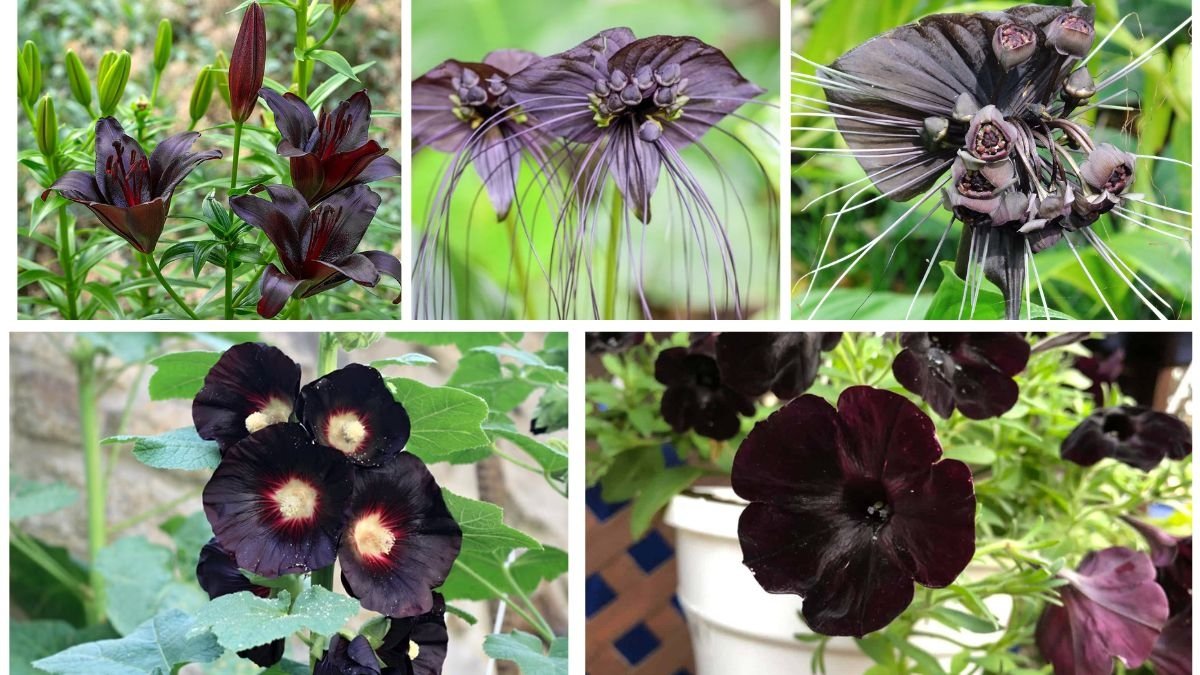





Leave A Comment